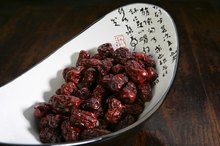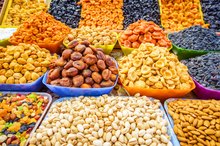What Causes Fruits to Mold?
You put some fresh fruit in a bowl on the counter and return sometime later to find that your fruit has sprouted mold. What exactly is mold and what caused the mold to grow at such an alarming rate?
Features
Mold are microscopic fungi that grow and live on plants, animals or animal waste. Mold spores spread by air, water or even bugs. They are organisms that are composed of many different cells, and it is the spores that give mold its distinct color. Mold thrives in warm and moist conditions. Although mold prefers to grow in warm places, there are some types of mold that produce just as well in cold conditions.
Why Mold Grows
How to Measure Citric Acid in Fruits Simply
Learn More
Mold often grows on fruit because the conditions are just right to culture the spores. Since fruit is moist, it is ground zero for harboring this microscopic fungi. Fruit provides the nutrients and moisture for mold to thrive. Mold spores, in this case, usually travel through the air and land on the fruit's surface. The cells then germinate, grow and divide, and then the mold process begins.
Dangers
Mold can be harmful to humans if exposure occurs. It is especially harmful to very young children and the elderly. Mold can trigger allergies and respiratory issues. Some molds even produce toxins that can cause cancer.
Prevention
Can I Live on Fruits Alone?
Learn More
The best thing to do to prevent mold from growing on your fruit is to make sure you keep the humidity levels in check in your home. Avoid wet towels, dishrags or sponges that may harbor mold and allow mold spores to travel through the air to your fruit. Clean your refrigerator with baking soda or bleach every three months.
Related Articles
Writer Bio
Kristen Burk has been writing since 2001. She was a writer for the "J-TAC" newspaper in college and "The Eagle Eye" in high school. Burk attended Tarleton State University and earned her Bachelor of Arts in English and languages.









